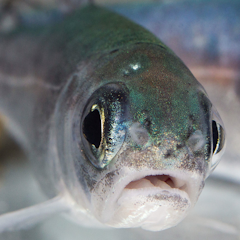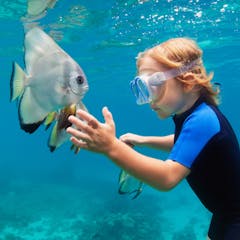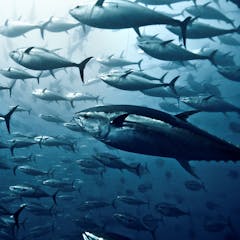
Todos os artigos de Fish
Exibindo 41 - 60 de 409 artigos

The snailfish was recently found living at depths believed physically impossible.

Raw seafood dishes such as sushi, poke bowls and ceviche are increasingly popular, but can harbour fish-borne parasites. What’s the best way to protect ourselves?

Putting a dollar value on nature has staunch opponents who say it’s morally wrong, but without it, building dams and other infrastructure can run roughshod over vital ecosystems.

Food quality, not just quantity, matters when it comes to the health and survival of the southern resident killer whales.

Antioxidants in salmon’s diet give the fish their distinctive colour, but internet rumours proliferate about how farmed salmon achieve the same colour.

We can trace our human evolutionary lineage back to fish.

Over 100 shark and ray species were recently added to an international treaty, known as the CITES list, to protect them from the threat of unsustainable and illegal trade.

By washing our clothes, we release microfibres into the environment which are then ingested by marine animals.

Pam Longobardi collects and documents ocean plastic waste and transforms it into public art and photography. Her work makes statements about consumption, globalism and conservation.

Carp can make riverbeds look like golf balls – denuded and dimpled, devoid of any habitat. Releasing carp herpes virus is a controversial proposition, so let’s weigh up the risks and benefits.

Why an exploding aquarium in Berlin should destroy prevailing myths about the inner lives of fish.

Neuroactive compounds in antidepressants enter our wastewater and affect how fish function. Identifying the potential damage to fish is paramount for protecting our aquatic ecosystems.

Rats are disrupting the flow of nutrients towards the sea on many tropical islands – this has consequences for fish behaviour and the wider ecosystem.

Swimming and surfing in the ocean is fun and invigorating. But sharing the water with animals comes with risks to us and them.

A new study shows that a time stamp can be put on mercury that accumulates in fish eyes, offering a window into their lifetime exposure.

Black corals provide critical habitat for many creatures that live in the dark, often barren, deep sea, and researchers are learning more about these rare corals with every dive.

Thousands of hours of ocean footage reveal how fish rub their heads on sharks to scrape off parasites and scratch itches.

Narwhals, hummingbirds and the Asian sheepshead wrasse have opened scientists’ eyes to the complexity of nature.

The ability of the Osun River to support biodiversity is being threatened by pollution and can only be rescued if the contamination ends.

Just about every creature on Earth needs to grab some Zs from time to time. Imagine trying to doze while dodging great whites and killer whales.
